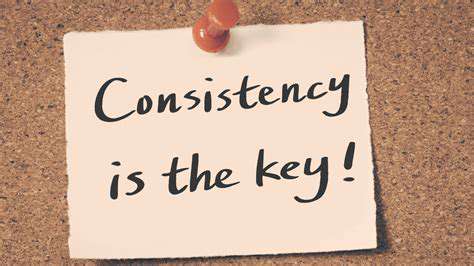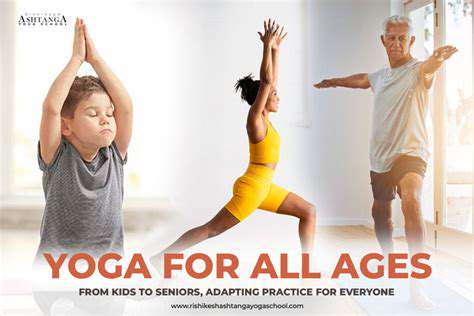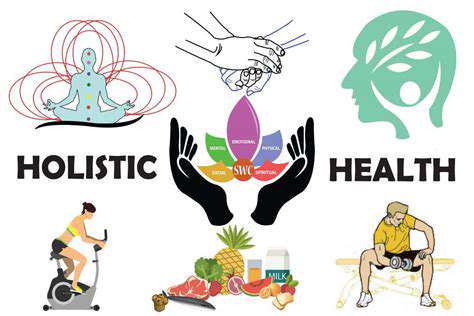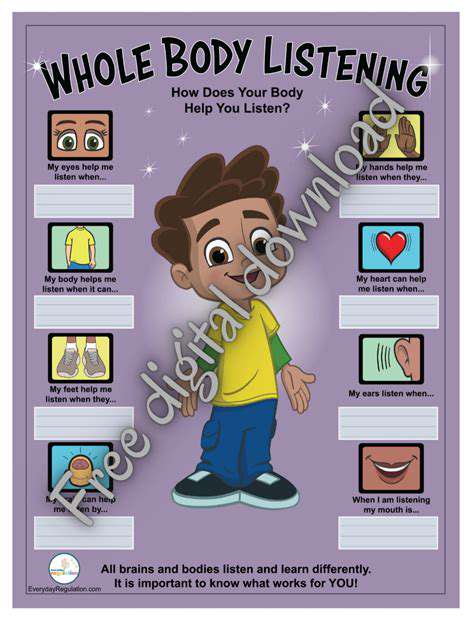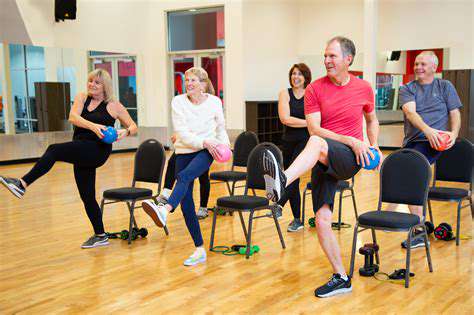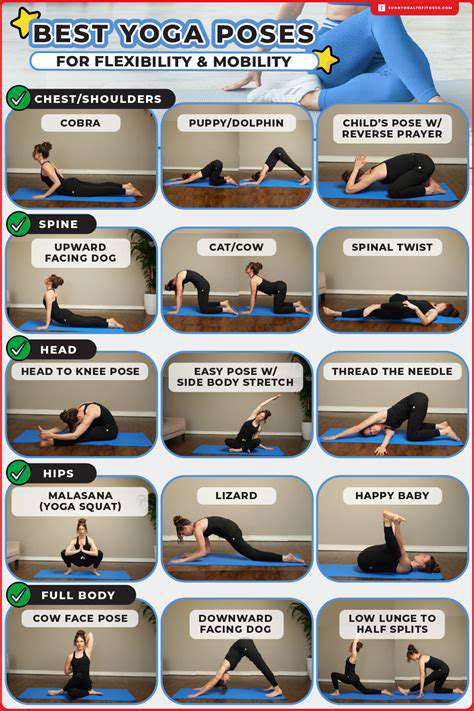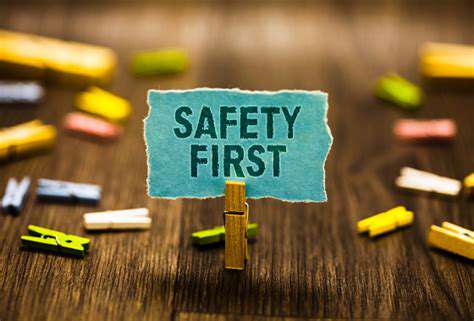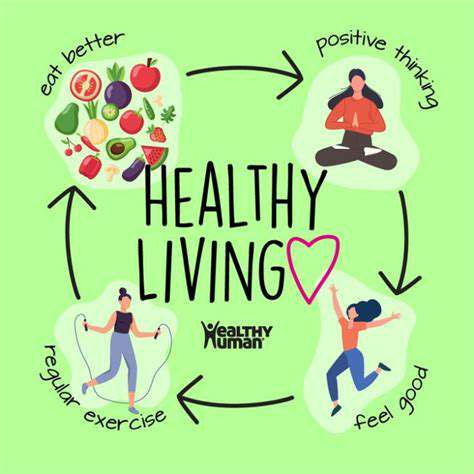Preventing Falls: Balance and Strength Training for Seniors at Home
Strengthening Muscles for Stability
Core Strengthening Exercises
Core strength is crucial for maintaining balance and preventing falls. Exercises targeting the abdominal, back, and pelvic floor muscles improve stability and reduce the risk of losing your balance during everyday activities. Incorporating these exercises into your routine, even just a few times a week, can significantly enhance your overall stability and reduce the likelihood of falls. Specific exercises such as planks, bridges, and leg raises can effectively engage these core muscles, promoting a stronger and more stable core.
Regular practice of core strengthening exercises can significantly improve your posture and proprioception. Proprioception is your body's awareness of its position in space, and stronger core muscles allow for better body awareness, which is essential for maintaining balance and preventing falls. This improved awareness can translate to better reactions and adjustments during unexpected movements or changes in your environment, helping you stay steady and avoid falls.
Lower Body Strength Training
Strengthening the muscles in your legs and feet is paramount for balance and preventing falls. Exercises focusing on the quads, hamstrings, calves, and ankles enhance your ability to maintain your center of gravity and react quickly to shifts in your balance. Activities like squats, lunges, calf raises, and ankle rotations contribute to a stronger, more stable lower body, making everyday movements safer and reducing the risk of tripping or losing your footing.
Strong leg muscles are essential for maintaining balance during walking, stair climbing, and other everyday activities. Improved strength in these areas translates to a more stable gait and better ability to recover from unexpected situations, reducing the risk of falls. Adding exercises that target these specific muscle groups into your routine, whether through weights or bodyweight exercises, can have a significant impact on your overall balance and fall prevention.
Consider incorporating balance exercises into your lower body routine to further enhance stability. These exercises challenge your body to maintain equilibrium while performing movements, thereby strengthening the muscles responsible for maintaining balance. Examples include single-leg stands, heel-to-toe walks, and standing on a balance pad. These specific exercises will further improve your ability to maintain balance and prevent falls.
Exercises focusing on foot and ankle strength are crucial for balance and preventing falls. Strengthening these areas can enhance your ability to maintain your center of gravity and react quickly to shifts in your balance. Activities like toe raises, heel raises, and using resistance bands for ankle rotations can contribute to a stronger and more stable foundation, making it easier to navigate various terrains and maintain balance.
Upper Body Strength Training
While often overlooked, upper body strength plays a vital role in preventing falls. Strong arms and shoulders help maintain balance during everyday activities like reaching for objects, getting up from a chair, or navigating obstacles. Exercises like arm curls, shoulder presses, and rows build strength in the upper body, which contributes to better posture and balance during movements. Maintaining this strength can prove to be extremely helpful to prevent falls.
Improving your upper body strength can significantly enhance your stability, making you more resilient to unexpected movements and maintaining your equilibrium in various environments. This enhanced stability can significantly reduce the risk of falls and improve your overall mobility and independence. Incorporating upper body strength training into a consistent exercise routine can be a crucial element in fall prevention.

Seeking Professional Guidance for Tailored Plans

Seeking Expert Counsel for Effective Career Advancement
Navigating the complexities of the modern job market requires more than just hard skills; it demands a strategic approach to career development. Seeking professional guidance can provide invaluable insights and support, helping individuals identify their strengths, weaknesses, and areas for improvement. This personalized approach allows for tailored advice and strategies, fostering a more effective and efficient path toward career advancement.
Understanding your career goals and aligning them with achievable steps is crucial. A professional advisor can help you articulate your aspirations, analyze your current situation, and develop a roadmap that encompasses both short-term and long-term objectives. This process ensures you're not just pursuing a job, but actively building a fulfilling and prosperous career.
Identifying and Leveraging Your Unique Strengths
A crucial aspect of professional guidance involves recognizing and leveraging your unique strengths. A skilled advisor can help you identify these strengths, which might not always be obvious to you, and provide strategies for showcasing them effectively in your professional interactions and applications. This identification is vital for creating a competitive edge and maximizing your potential.
By focusing on your strengths, you can develop a more targeted approach to career advancement, minimizing wasted time and effort on areas that might not be as advantageous. Understanding your strengths allows you to pursue roles and opportunities that genuinely resonate with your skills and passions, leading to higher job satisfaction and a more fulfilling professional journey.
Crafting a Compelling Personal Brand
In today's competitive job market, a strong personal brand is essential for standing out from the crowd. A professional advisor can help you define and cultivate a compelling personal brand that accurately reflects your skills, experience, and values. This process involves understanding your target audience and tailoring your message to resonate with potential employers and collaborators.
Developing Effective Networking Strategies
Networking is a critical component of career advancement, and a skilled advisor can provide guidance on developing effective networking strategies. Building strong professional connections can open doors to new opportunities and provide invaluable insights into industry trends and best practices. This support goes beyond simply exchanging business cards; it's about cultivating meaningful relationships that can foster growth and collaboration.
Learning how to network effectively involves understanding the nuances of different professional settings and tailoring your approach accordingly. A professional advisor can provide practical techniques for engaging in meaningful conversations, building rapport, and leveraging your network to advance your career goals.
Overcoming Career Challenges and Roadblocks
Everyone faces challenges and setbacks in their careers. A professional advisor can provide guidance and support in navigating these obstacles, offering strategies for overcoming roadblocks and developing resilience. Understanding the root causes of these challenges and developing solutions is crucial for maintaining momentum and achieving career success.
Professional guidance can provide a safe space to discuss concerns, analyze potential solutions, and develop a proactive approach to overcoming any hurdles. This support can empower individuals to persevere through difficult times and emerge stronger and more equipped for future challenges.
